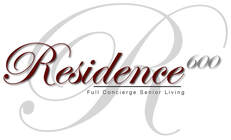|
These days, the talk is all about Facebook and other social media options. Looking at these sites can give news about the world, show pictures of a nephew's new baby, share a chuckle, or update information on someone's latest surgery. How did we learn things before Facebook?
The Newspaper. Even in the 1860s, American newspapers had social columns, reporting on visits, trips and parties. Correspondents from small communities might send a weekly letter into the city newspaper, with descriptions of someone's new baby or wedding party. Sometimes there were juicy details, too! The Round Robin. In past times, when people still wrote letters, put a stamp on them and dropped them into a mailbox, a family or group of friends might start a round-robin letter. The first writer would tell her news and send it to the next person, who would add what was happening in his life, and send it on to another one. In this way, a larger group could be informed of all the news. At the end of the line, the last person sent it back to the first, and the communicating started all over again. The Coffee Klatch or the Water Cooler. People in the past who worked at home (primarily women) had their coffee groups, and workers might gather around the water cooler during a break, all sharing news of their lives or work gossip. The Party Line. Starting in 1878, subscribers to telephone service could save money by sharing the line with other households. (During the world wars, all lines were "party lines.") By quietly listening on their home phone, people could eavesdrop on other conversations and learn things they might not otherwise be privy to. Times and technology change. People communicate in new and amazing ways in each generation, but, however it happens, the news gets around. Charlene Frazier Community Coordinator [email protected] www.residence600.com 600 E. Elm Salina KS 67401 (785) 822-1300
0 Comments
Leave a Reply. |
Archives
June 2024
Categories |
|
|
Powered by Janzen Marketing, LLC.
Luxury Senior Living
Luxury Senior Living


 RSS Feed
RSS Feed
